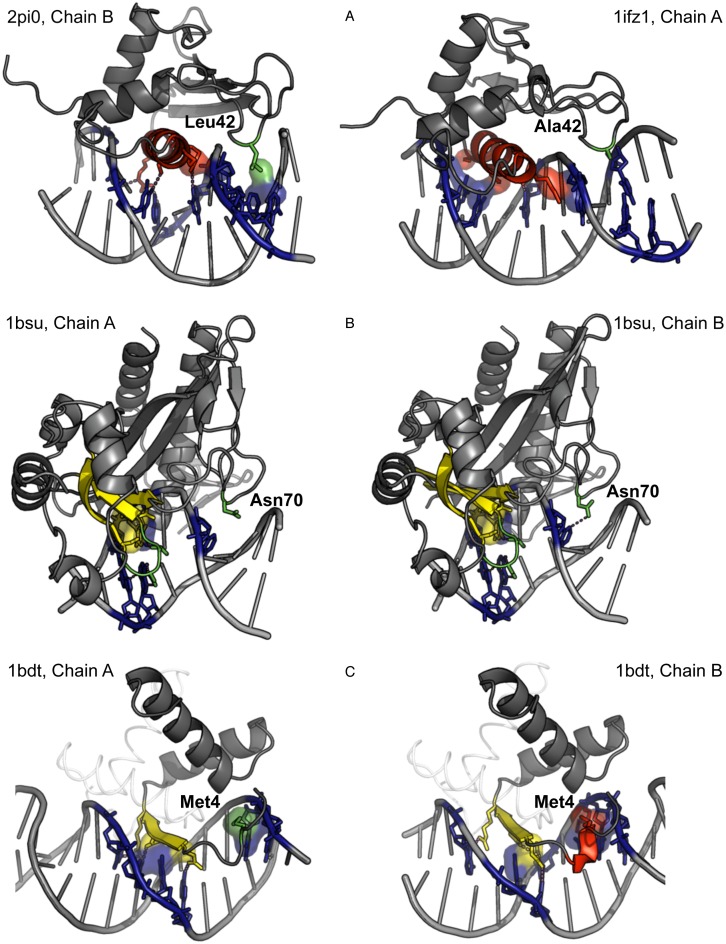Figure 3.
Variations of DNA interaction modes within one SCOP family. Only contacts with DNA grooves are shown. Hydrophobic clusters are represented with their surfaces, hydrogen bonds with dashed lines. (A) Family ‘Interferon regulatory factor’, an additional contact due to an aa residue replacement; (B) family ‘Restriction endonuclease EcoRV’, the presence of a contact depends on conformation of a side chain; (С) family ‘Arc/Mnt-like phage repressors’, the type of the contact, L – Mj or H – Mj, depends on detection of 310-helix (in red) or unstructured segment (in green) by the program Stride.

